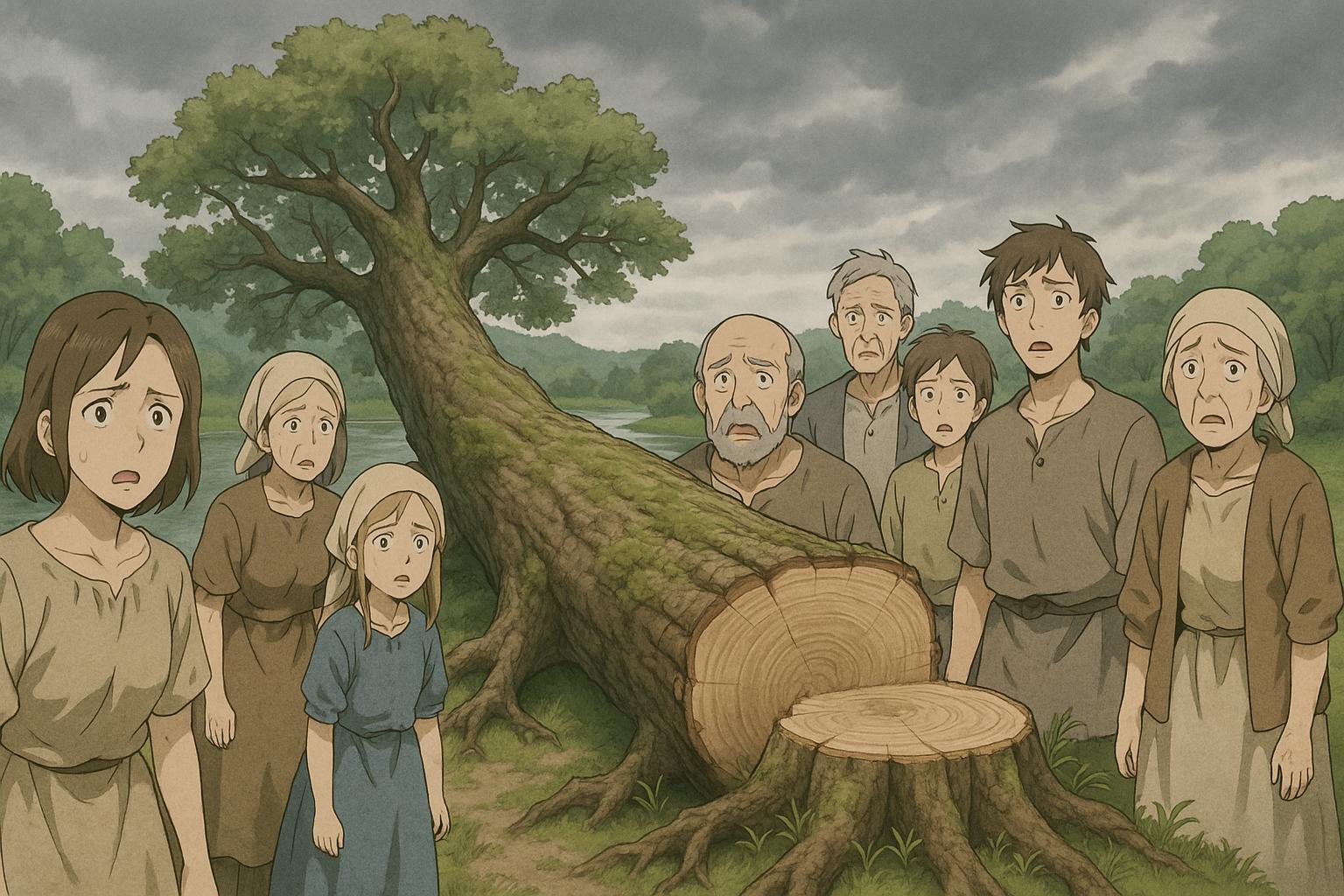Locals in Norfolk are reeling from the shocking act of vandalism that claimed two 150-year-old beech trees at Drayton Green Lanes, a cherished area known as "the beauty spot" alongside the River Wensum. These trees, which stood as sentinels of nature for generations, were felled without warning, triggering an investigation by the police. The trees are part of a Special Area of Conservation, making their destruction not only an assault on local beauty but also an affront to environmental protections that are designed to safeguard such vital habitats.
Esther Jury, who discovered the devastation early on April 7, described the emotional toll of the incident, stating, “It’s really upsetting.” She noted a troubling parallel to the infamous vandalism of the Sycamore Gap tree, asserting that the current destruction stems from a mentality that seeks notoriety through such acts of ecocide. As an active member of the local community, Esther has often enjoyed swimming in the river and walking her dog along the banks, activities that highlight the area's significance to residents.
The incident has sparked widespread outrage, with arborist John Allaway labelling the act as “moronic vandalism” akin to previous environmental travesties. After assessing the site, Allaway confirmed the trees had been crudely cut down, indicating an amateur approach that left a grim reminder of the damage done. “These were beautiful old beeches,” he remarked, noting their age and the circumstances surrounding their removal. The call for increased security measures, such as installing CCTV in the nearby car park—a hotspot for previous incidents of fly-tipping—has gained traction among the concerned residents.
This incident resonates with a disturbing trend of tree vandalism across the UK. Recently, the Norfolk police launched an investigation into a separate incident involving the illegal felling of young oak trees along the A149 Caister bypass. Norfolk County Council has announced plans to replant trees in response to these acts, reflecting a growing commitment to re-evaluate the protection of public and environmental assets. Councillor Penny Carpenter expressed disbelief over the deliberate destruction of public property, underscoring the community's vested interest in maintaining its green spaces.
Further afield, Cambridge has witnessed similar episodes, as residents voiced their anger over the deliberate damage inflicted upon a 150-year-old laurel tree in Mill Road Cemetery. The city council’s prompt response to initiate remedial treatment for the injured tree highlights the urgent need for coordinated efforts to safeguard urban greenery against acts of vandalism.
In Boston, Lincolnshire, the situation has escalated alarmingly with 30 trees cut down across woodland parks, leading to safety concerns and the closure of parts of these public spaces. The distress felt by local conservationists emphasises an overarching need for stronger protective measures to deter future acts of violence against nature.
Across all these incidents, a narrative emerges—a collective cry for accountability and respect for the environment that holds intrinsic value beyond mere aesthetics. As communities grapple with the impacts of such vandalism, the commitment to restoring damaged areas remains unwavering, showcasing a resilient spirit in the face of ecological harm. Amidst discussions for increased vigilance and community action, the call for a cultural shift towards reverence for nature becomes ever more vital. The tragic events at Drayton Green Lanes serve as a stark reminder of the fragility of our shared environmental heritage and the urgent need to protect it for future generations.
Reference Map
- Paragraphs 1, 2, 3, 4, 7
- Paragraphs 5, 7
- Paragraph 6
- Paragraph 5
- Paragraph 6
Source: Noah Wire Services
